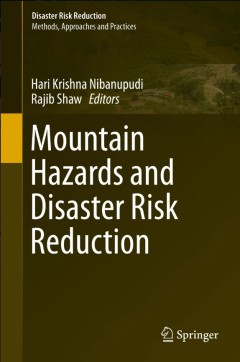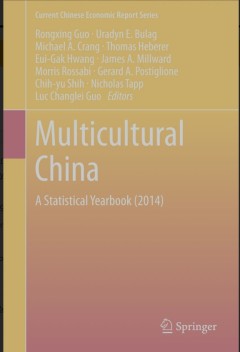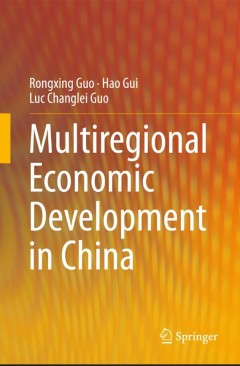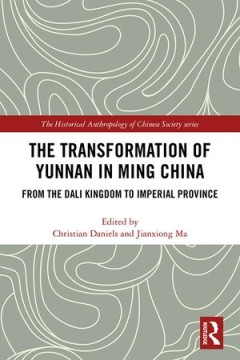Filter by

Mountain Hazards and Disaster Risk Reduction
The Hindu Kush Himalayan (HKH) region is highly vulnerable to earthquakes and water-induced disasters. This fragile mountain region is under tremendous stress from climate change and land-use degradation that has accelerated flash floods, river-line floods, erosion, and wet mass movements during the monsoon period and drought in the non-monsoon period. Against the backdrop of intensifying disas…
- Edition
- 1
- ISBN/ISSN
- 978-4-431-55241-3
- Collation
- XI, 284
- Series Title
- Disaster Risk Reduction
- Call Number
- -

National Innovation Efficiency During the Global Crisis
What effect did the Great Recession have on innovation efficiency and the effectiveness of scarce resource management? Did countries with high GDPs and GDPs per capita sustain efficient innovation? How did the recession affect the time lag between innovation development and implementation? This book presents the most comprehensive data set in current economic literature to measure and compare t…
- Edition
- 1
- ISBN/ISSN
- 978-1-137-58254-6
- Collation
- XVII, 184
- Series Title
- -
- Call Number
- -

Theme Cities: Solutions for Urban Problems
This book reviews a series of new urban ideas or themes designed to help make cities more liveable, sustainable, safe and inclusive. Featuring examples drawn from cities all over the world, the various chapters provide critical assessments of each of the various approaches and their potential to improve urban life.
- Edition
- -
- ISBN/ISSN
- 978-94-017-9655-2
- Collation
- -
- Series Title
- -
- Call Number
- -

Multicultural China
With its easy-to-use format, this book provides a collection of annual data on China’s 56 ethnic groups. It is a resource book that profiles the demography, employment and wages, livelihood, agriculture, industry, education, science and technology, culture, sports, and public health for each of these ethnic groups. This material, which is compiled from a variety of sources, will be of great v…
- Edition
- 1
- ISBN/ISSN
- 2194-7937
- Collation
- XIX, 434
- Series Title
- Current Chinese Economic Report Series
- Call Number
- -

Multiregional Economic Development in China
This book provides, in an easy-to-use format, an extensive collection of data and information on China’s 31 provinces and its interprovincial economic linkages. Intended as a comprehensive resource book, it profiles the geography, demography, and economy for each province. The materials presented, which are gathered from a variety of sources, including many not easily found in English-languag…
- Edition
- 1
- ISBN/ISSN
- 978-3-662-46619-3
- Collation
- XV, 528
- Series Title
- -
- Call Number
- -

The Transnational and the Local in the Politics of Islam The Case of West Su…
This book explores the relationship between transnational and local Islam as expressed in public discourse and policy-making, as represented in the local press. It does so against the background of local governments in majority Muslim regions across Indonesia promoting and passing regulations that mandate forms of social or economic behaviour seen to be compatible with Islam. The book situates …
- Edition
- -
- ISBN/ISSN
- 978-3-319-15413-8
- Collation
- -
- Series Title
- -
- Call Number
- -

The Towers of New Capital
With mega townships as the tool, this book analyses the complexity, scale and the challenges associated with the development paradigm in India from various built environment lenses. The Towers of New Capital is an enquiry into how these 'global fixes' are leading to territorial reorganization.
- Edition
- -
- ISBN/ISSN
- 978-1-137-58626-1
- Collation
- -
- Series Title
- -
- Call Number
- -

The Tagore-Gandhi Debate on Matters of Truth and Untruth
Between 1915 and 1941, Tagore (1861-1941) and Gandhi (1869-1948) differed and argued about many things of personal, national, and international significance---satyagraha, non-cooperation, the boycott and burning of foreign cloth, the efficacy of fasting as a means of resistance and Gandhi’s mantra connecting “swaraj” and “charkha”. The author tracks the development of this dialogue an…
- Edition
- -
- ISBN/ISSN
- 978-81-322-2116-6
- Collation
- -
- Series Title
- -
- Call Number
- -

The Socioeconomic Evolution of the European Union Exploring the Electronic F…
This volume explores the role of territory in the creation, maintenance and extension of a new type of frontier, the electronic frontier, from a social and economic point of view. It departs from the earlier concepts of borders – state, social, economic, ethnic, religious, etc. – to investigate the fluidity of borders and their shift towards an axis-based paradigm within the free-movement …
- Edition
- -
- ISBN/ISSN
- 978-3-319-40304-5
- Collation
- -
- Series Title
- -
- Call Number
- -

The Transformation of Yunnan in Ming China: From the Dali Kingdom to Imperial…
This book examines how the Ming state transformed the multi-ethnic society of Yunnan into a province. Yunnan had remained outside the ambit of central government when ruled by the Dali kingdom, 937-1253, and its foundation as a province by the Yuan regime in 1276 did not disrupt Dali kingdom style political, social and religious institutions. It was the Ming state in the fourteenth to seventeen…
- Edition
- -
- ISBN/ISSN
- 9781000762112
- Collation
- -
- Series Title
- -
- Call Number
- 300.7 TRA t
 Computer Science, Information & General Works
Computer Science, Information & General Works  Philosophy & Psychology
Philosophy & Psychology  Religion
Religion  Social Sciences
Social Sciences  Language
Language  Pure Science
Pure Science  Applied Sciences
Applied Sciences  Art & Recreation
Art & Recreation  Literature
Literature  History & Geography
History & Geography